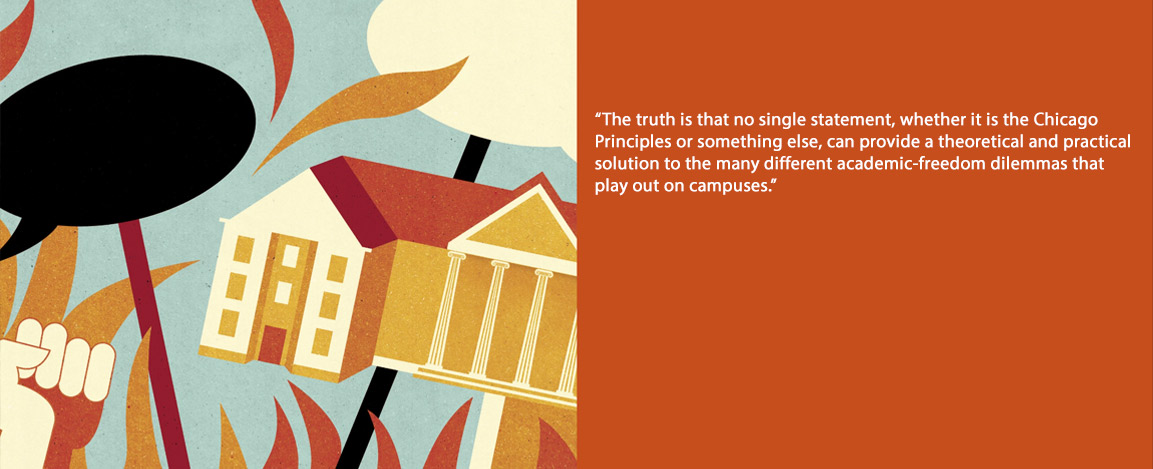CIS affiliate Malick W Ghachem writes about protecting free speech in higher education. This article was originally published here in The Chronicle of Higher Education. An excerpt is featured below.
In 2015 the University of Chicago released a set of guidelines attempting to clarify the institution’s “overarching commitment to free, robust, and uninhibited debate.” Since then, a movement of fervent, self-proclaimed free-speech advocates has urged colleges to adopt Chicago’s principles on free expression as their own. According to the Foundation for Individual Rights and Expression, over 90 colleges have now done so in some format. And yet this movement is antithetical to diversity of thought, and even threatens to undermine the cause of free expression itself.
The Chicago Principles were framed in the early years of the so-called “cancel culture” era, and so are preoccupied with the need to repudiate censorship of disfavored views and the promotion of “safe spaces.” As the statement puts it, it is not the University of Chicago’s proper role “to attempt to shield individuals from ideas and opinions they find unwelcome, disagreeable, or even deeply offensive.” The movement to adopt the Chicago Principles venerates this part of the document, particularly as it applies to disputes over race-conscious policies such as affirmative action. If the movement were a sports team, its mascot would be the embroiled critic of diversity, equity, and inclusion culture — a Dorian Abbot- or Joshua Katz-type of figure. The team’s leading cheerleaders include FIRE, the Academic Freedom Alliance, the editorial page of The Wall Street Journal, and the members of the Alumni Free Speech Alliance (including the Princeton University and Massachusetts Institute of Technology chapters). These boosters of the Chicago Principles tend to frame DEI practices as antithetical to free expression and academic freedom.
But the excessive focus on the travails of the disinvited speaker and dangers of “diversity bureaucrats” leads to distorted assessments. Take, for example, the late Judge Laurence H. Silberman’s claim that “cancel culture” is worse than even the excesses of McCarthyism. Judge Silberman is right that “toleration of all political speech is the crucial unifying factor in our country.” But no credible historian of the 1950s would agree with Silberman’s hyperbolic verdict on the contemporary American university.
No single statement can provide a theoretical and practical solution to the many different academic-freedom dilemmas that play out on campuses.
The truth is that no single statement, whether it is the Chicago Principles or something else, can provide a theoretical and practical solution to the many different academic-freedom dilemmas that play out on campuses. Context is too unforgiving of abstract principle, and lofty pronouncements about the evils of disinviting speakers provide precious little insight into the subtleties of teaching in diverse classrooms where the challenge is to turn disagreement into an occasion for learning. (The recent controversy at Hamline University is a case in point.) Grand statements of principle do little when dealing with specific cases, and exhaustive, civil-law-style codes that seek to detail which forms of speech are or are not permitted are also folly.
The challenge, instead, is to find ways to integrate free expression into all aspects of the curriculum. Free expression is a rich and complex learning process as much as it is a set of principles, and as such it must negotiate classroom realities. Professors are trying to instill confidence in their students, to promote a positive learning environment, and to advance the specific goals of their institution’s mission statements. They are attempting to build a classroom community while also fostering free and robust debate. They face pressure from administrators, student groups, and even parents — not to mention the toxic fallout of any classroom spats that hit social media. None of these concerns are adequately addressed by the Chicago Principles. It is why several institutions that have adopted the guidelines use personalized versions only loosely faithful to the original.
Read the full article here.




